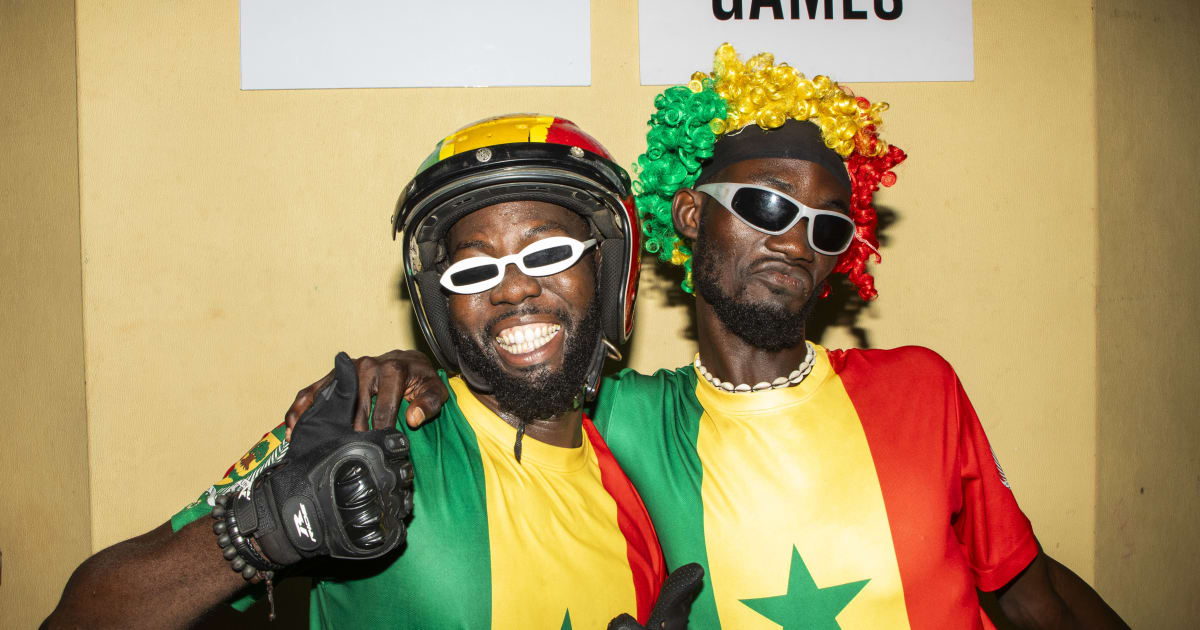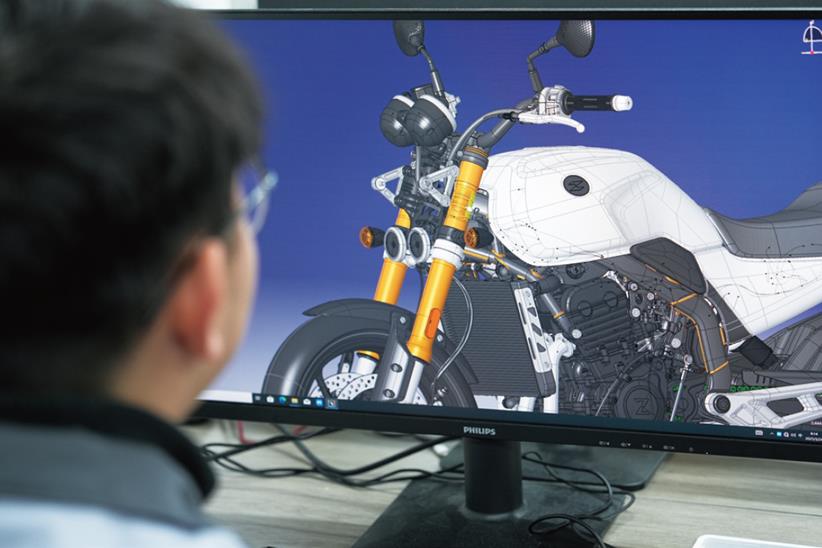- Mandatory bird housing imposed in England as bird flu spreads Reuters
- Third bird flu case confirmed at Suffolk poultry unit BBC
- National Housing Order declared to protect poultry from Avian Influenza GOV.UK
- Bird flu outbreaks confirmed at two…
Author: admin
-
Mandatory bird housing imposed in England as bird flu spreads – Reuters
-

The Strad News – Semi-finalists announced for 2025 Isang Yun Cello Competition
Read more news stories here
The cello semi-finalists for the 2025 Isang Yun Competition have been announced, following the first rounds held on 2 and 3 November in Tongyeong, South Korea.
From the 24 participants in the first round, ten…
Continue Reading
-

Preview and schedule for final edition marking a year to go until 2026 Youth Olympics
The cultural and sports initiation programmes in Dakar and Saly
The cultural program of Dakar en Jeux will be a thrilling and vibrant experience, according to the organisers, infusing music, sports initiations, fashion shows, and music…
Continue Reading
-

Royalty Pharma Acquires Royalty Interest in Alnylam’s AMVUTTRA for $310 Million from Blackstone Life Sciences
New York, NY and Cambridge, MA – Royalty Pharma plc (Nasdaq: RPRX) today announced that it has acquired a royalty interest in Alnylam’s AMVUTTRA from funds managed by Blackstone Life Sciences (“Blackstone”) for $310 million. The royalty interest being sold stems from Blackstone’s 2020 financing collaboration with Alnylam, in which Blackstone invested to support AMVUTTRA’s pivotal Phase 3 HELIOS-B trial.
AMVUTTRA is an FDA-approved RNAi therapeutic for the treatment of ATTR amyloidosis, a progressive, degenerative and fatal disease caused by misfolded proteins that accumulate in the nerves, heart and GI tract.
“We are delighted to acquire a royalty interest in AMVUTTRA,” said Pablo Legorreta, founder and Chief Executive Officer of Royalty Pharma. “AMVUTTRA is a breakthrough RNAi therapeutic that delivers compelling benefits to patients, including a meaningful reduction in all-cause mortality for ATTR cardiomyopathy patients. Its impressive commercial trajectory underscores the significant market opportunity for the product and positions it as a highly attractive contributor to Royalty Pharma’s portfolio.”
AMVUTTRA received FDA approval for the treatment of TTR amyloidosis with cardiomyopathy (ATTR-CM) in 2025 and for hereditary TTR amyloidosis with polyneuropathy (hATTR-PN) in 2022. ATTR-CM represents a fast-growing category driven by new therapeutic options and improving diagnosis rates. There are approximately 30,000 hATTR-PN patients globally and more than 300,000 ATTR-CM patients globally, of which just 20% are currently diagnosed. AMVUTTRA sales reached approximately $1 billion in 2024, which represented 74% year-over-year growth, and are projected to exceed $6 billion by 2028 based on analyst consensus.
Transaction Terms
Royalty Pharma has acquired Blackstone’s 1% royalty on worldwide net sales of AMVUTTRA in exchange for an upfront payment of $310 million. The royalty duration for AMVUTTRA will extend through March 2035. The transaction is expected to deliver returns consistent with Royalty Pharma’s stated targets for approved products under a range of scenarios that factor in significant potential competition from Alnylam’s follow-on product, nucresiran. The transaction with Royalty Pharma is for AMVUTTRA sales beginning on October 1, 2025 and excludes the fixed payments paid to Blackstone as part of the original transaction in which Blackstone invested $70 million.Advisors
Gibson Dunn, Dechert and Maiwald acted as legal advisors to Royalty Pharma. Ropes & Gray and TD Securities acted as advisors to Blackstone.About Royalty Pharma
Founded in 1996, Royalty Pharma is the largest buyer of biopharmaceutical royalties and a leading funder of innovation across the biopharmaceutical industry, collaborating with innovators from academic institutions, research hospitals and non-profits through small and mid-cap biotechnology companies to leading global pharmaceutical companies. Royalty Pharma has assembled a portfolio of royalties which entitles it to payments based directly on the top-line sales of many of the industry’s leading therapies. Royalty Pharma funds innovation in the biopharmaceutical industry both directly and indirectly – directly when it partners with companies to co-fund late-stage clinical trials and new product launches in exchange for future royalties, and indirectly when it acquires existing royalties from the original innovators. Royalty Pharma’s current portfolio includes royalties on more than 35 commercial products, including Vertex’s Trikafta, GSK’s Trelegy, Roche’s Evrysdi, Johnson & Johnson’s Tremfya, Biogen’s Tysabri and Spinraza, Servier’s Voranigo, AbbVie and Johnson & Johnson’s Imbruvica, Astellas and Pfizer’s Xtandi, Pfizer’s Nurtec ODT, and Gilead’s Trodelvy, and 17 development-stage product candidates.About Blackstone Life Sciences
Blackstone Life Sciences (BXLS) is an industry-leading private investment platform with capabilities to invest across the life cycle of companies and products within the key life science sectors. By combining scale investments and hands-on operational leadership, BXLS helps bring to market promising new medicines and medical technologies that improve patients’ lives and currently has $12 billion in assets under management.Royalty Pharma Forward-Looking Statements
The information set forth herein does not purport to be complete or to contain all of the information you may desire. Statements contained herein are made as of the date of this document unless stated otherwise, and neither the delivery of this document at any time, nor any sale of securities, shall under any circumstances create an implication that the information contained herein is correct as of any time after such date or that information will be updated or revised to reflect information that subsequently becomes available or changes occurring after the date hereof. This document contains statements that constitute “forward-looking statements” as that term is defined in the United States Private Securities Litigation Reform Act of 1995, including statements that express the company’s opinions, expectations, beliefs, plans, objectives, assumptions or projections regarding future events or future results, in contrast with statements that reflect historical facts. Examples include discussion of Royalty Pharma’s strategies, financing plans, growth opportunities, market growth, and plans for capital deployment. In some cases, you can identify such forward-looking statements by terminology such as “may,” “might,” “will,” “should,” “expects,” “plans,” “anticipates,” “believes,” “estimates,” “target,” “forecast,” “guidance,” “goal,” “predicts,” “project,” “potential” or “continue,” the negative of these terms or similar expressions. Forward-looking statements are based on management’s current beliefs and assumptions and on information currently available to the company. However, these forward-looking statements are not a guarantee of Royalty Pharma’s performance, and you should not place undue reliance on such statements. Forward-looking statements are subject to many risks, uncertainties and other variable circumstances, and other factors. Such risks and uncertainties may cause the statements to be inaccurate and readers are cautioned not to place undue reliance on such statements. Many of these risks are outside of Royalty Pharma’s control and could cause its actual results to differ materially from those it thought would occur. The forward-looking statements included in this document are made only as of the date hereof. Royalty Pharma does not undertake, and specifically declines, any obligation to update any such statements or to publicly announce the results of any revisions to any such statements to reflect future events or developments, except as required by law. For further information, please reference Royalty Pharma’s reports and documents filed with the U.S. Securities and Exchange Commission (“SEC”) by visiting EDGAR on the SEC’s website at www.sec.gov.Royalty Pharma Investor Relations and Communications
+1 (212) 883-6637
[email protected]Blackstone
David Vitek
(212) 583-5291
[email protected]Continue Reading
-

Robert Macfarlane on Embracing Flow and Letting Rivers Heal Us
Robert Macfarlane
We are all water bodies. We are made so massively of water, our bones, our brain, our lungs, our blood, they all flow, even though we think of them as static. And that begins to tell…
Continue Reading
-
Stage is set as six teams chase final two Paralympic berths
When the puck drops at the 2025 World Para Ice Hockey Paralympic Winter Games Qualification Tournament on Wednesday (5 November), six nations will battle for the final two coveted spots at the Milano Cortina 2026 Paralympic Winter Games.
From…
Continue Reading
-

‘It Never Quite Came Together, and It Was Never Finished’ — Rockstar Co-Founder Dan Houser Discusses Canceled GTA 5 Single-Player Trevor DLC for First Time
Grand Theft Auto fans have known for some time that Rockstar Games worked on a single-player DLC for GTA 5 that would have seen Trevor assume the role of a secret agent.
Last year, voice actor Steven Ogg said Rockstar originally planned to make a…
Continue Reading
-

Will Trump’s support win Cuomo last-minute surge – or could it hurt him? | Explainer News
As his hometown of New York votes for its next mayor, United States President Donald Trump has thrown his support behind Andrew Cuomo, a Democrat and former New York state governor who is standing as an independent this time.
The Republican…
Continue Reading
-
World leaders adopt Doha declaration to boost efforts on social development – UN News
- World leaders adopt Doha declaration to boost efforts on social development UN News
- Doha declaration ‘booster shot for development’ amid global uncertainty: UN Al Jazeera
- President to visit Doha, will hold ‘important meetings’ with global…
Continue Reading


